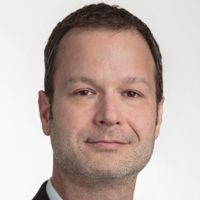Transmission projects can take a decade or more to build, so well-informed planning is critical to making smart investments. As we look to an affordable, low-risk and low-carbon energy future, wind and solar will likely be playing a significantly larger role in meeting our electricity demand. But where will these resources be developed? What technologies will drive the market? And what transmission infrastructure will be needed? These are questions that the electric industry is beginning to answer—but are planners thinking as big and broad as they should be?

Planning for tomorrow’s clean energy demand must consider several factors, including what technologies will be used ten or more years from now.
MISO—the Midcontinent Independent System Operator—has one critical function: to ensure a reliable electricity supply across much of the Midwest and Southern United States. It does this through two primary responsibilities: design and operation of the wholesale power markets and overseeing the efficient and cost-effective operation and build-out of the transmission system.
The growing nationwide demand for carbon-free resources is also driving demand for transmission to further tap the Midwest’s robust wind resource. Recognizing this, MISO has begun a “siting process” to better understand where wind developers will likely site new projects over the next 10 to 15 years. This involves detailed analytics, extensive research, some educated guesswork, and input from a variety of stakeholders.
Working with the Environmental Sector stakeholder group to weigh in on this process, the Union of Concerned Scientists is pushing MISO to think big—as in bigger wind turbines—when contemplating future wind development in the Midwest.
The wind industry is shifting to taller, more efficient turbines
Up until now, much of the wind development across the Midwest has been done with wind turbines measuring 80 meters in height, and MISO has initially identified future wind energy sites assuming the continued use of these 80-meter turbines.
But the industry is beginning to turn to 100-meter turbines because (1) the wind resource is significantly more consistent at that height, and (2) it is also more geographically diverse, meaning more areas across the Midwest (and beyond) have a strong enough wind resource to justify investment by developers.
In fact, as Wind on the Wires (a wind industry advocacy organization) detailed in its comments to MISO on this topic, the MISO region is already experiencing the industry’s shift toward 100-meter wind turbines in eastern Iowa, Illinois, and Michigan.
Wind resource maps developed by the National Renewable Energy Lab (below) show the greater geographic diversity of the nation’s wind resource at 100 meters compared to 80 meters. Greater diversity is a good thing for MISO as a more geographically diverse resource means a greater ability to site wind projects where they can cost-effectively be connected to the grid and meet demand across larger areas of the nation.

Comparing wind speed maps at 80 meters (left) and 100 meters (right) shows how the cost-effective resource grows in size and geographic diversity as you move to higher wind turbines. Wind speeds typically need to reach 6.5 meters per second or more (shown as orange, purple, and blue in the maps) to be cost-effective for wind developers.
For example, it is likely that updating MISO’s study using the 100-meter wind resource would identify additional or preferred development locations in Illinois, Indiana, and Michigan that are cheaper to connect to the grid, more easily delivered across the MISO region, and potentially even able to help meet demand for cost-effective, carbon free electricity in the Eastern US. Diversity of resources is also valued for smoothing supply and demand—essentially improving electric reliability—and this is true for wind production, too.
When looking to the future, we should be thinking even bigger
What’s more, it’s not too early for MISO to be thinking even bigger. When you look at the wind resource at 110 meters, potential cost-effective wind resources now spread across much of the US. In MISO’s case, this means the possibility of development in member states that have historically not been seen having attractive wind potential.
At 110 meters, states like Mississippi, Alabama, Arkansas, and even Louisiana have significant wind resources—again meaning the potential for these states to meet demand for carbon-free energy with more localized wind resources. And “more localized” often means less transmission investment is required.
MISO states’ wind potential at 80 and 110 meters

At 100 meters, every state that is predominantly served by MISO has significant potential for wind development. Thinking now about how the right transmission investments can provide access to these wind resources will be important to helping states meet demand for cost-effective, zero-carbon energy. Source: NREL Wind Energy Potential Dataset, available here.
When it comes to planning for future wind development, MISO should be thinking big—as in bigger turbines—and broad—as in across much of MISO’s service territory. Like a quarterback in football, you don’t throw where the receiver is; you throw where he’s going. Transmission planning is similar—you have to be planning and building now for where the US is heading over the next 10 years or more.
As we look to the nation’s growing appetite for cost-effective wind energy, it makes sense to be thinking in terms of today’s taller turbines that can access wind resources across much of the Midwest and beyond. Given the long lead time to plan and build transmission infrastructure, it’s a good thing that this conversation is happening. But we need to make sure it’s the right conversation that will lead to the right investments for our clean energy future.
